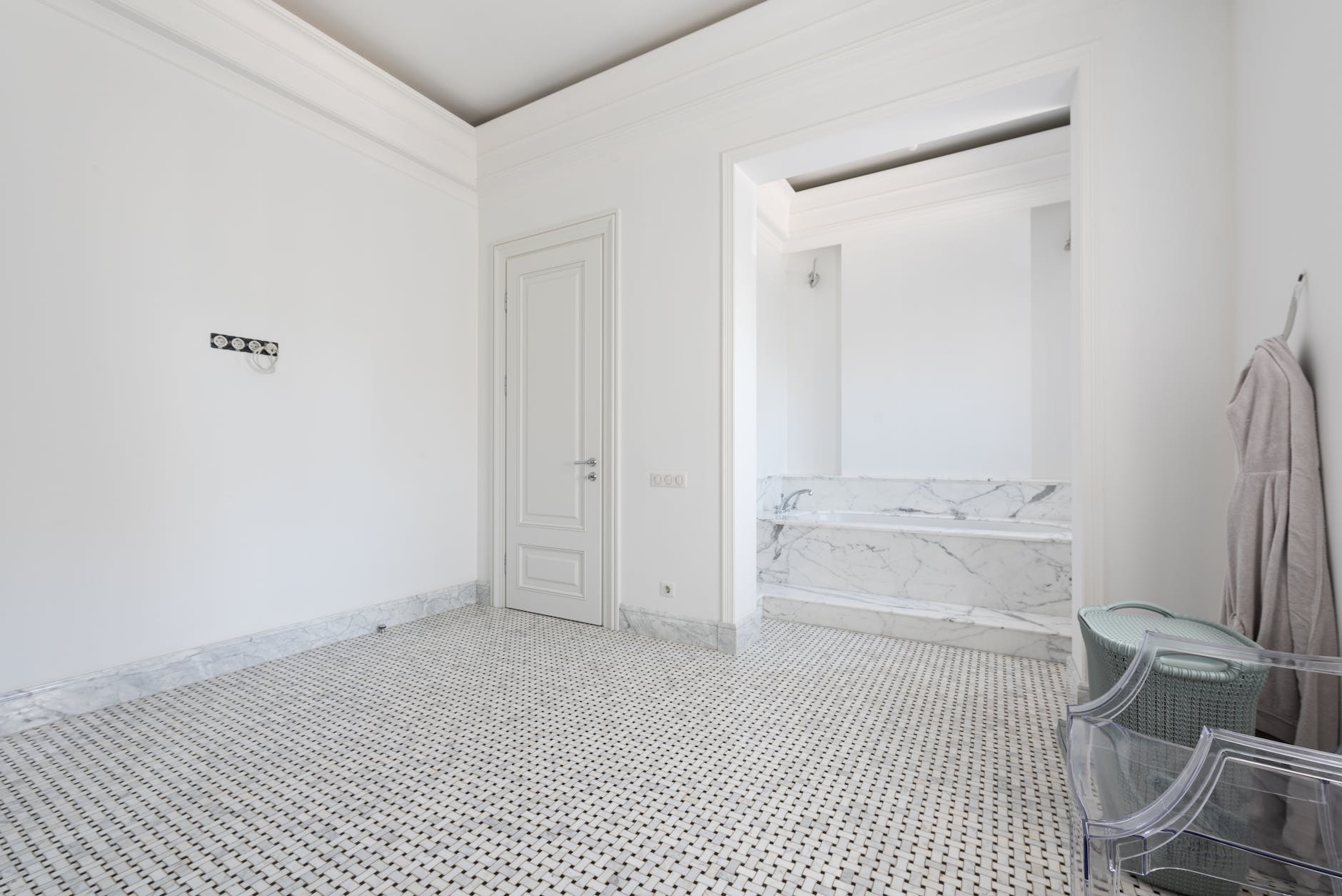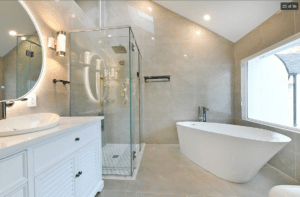Understanding Bathroom Renovations
Stepping into the realm of bathroom renovations can be a rewarding yet challenging venture. A successful renovation not only enhances the aesthetics and functionality of your bathroom but can also significantly increase the overall value of your property.
The Importance of Bathroom Renovations
Bathroom renovations are essential for several reasons. Firstly, they provide an opportunity to update outdated fixtures and improve the overall design, leading to a more comfortable and visually appealing space. Additionally, renovations can lead to increased energy efficiency, water conservation, and improved safety, particularly for people with mobility issues.
Moreover, bathroom renovations can significantly boost the value of your property. An updated, modern bathroom is a major selling point for potential buyers and can contribute to a higher return on investment. For a comprehensive guide on planning and executing bathroom renovations, explore our article on bathroom renovations: a step-by-step guide for homeowners.
Lastly, bathroom renovations provide an opportunity to personalize your space according to your unique style and requirements. Whether you’re interested in modernizing your space or maximizing small spaces, a well-planned renovation can help you achieve your bathroom goals.
Common Mistakes to Avoid
Despite the many advantages of bathroom renovations, mistakes can happen. Some common pitfalls include not setting a realistic budget, overlooking ventilation needs, choosing wrong materials, and failing to consider the long-term maintenance requirements.
Ignoring the details can also lead to a subpar renovation. For instance, neglecting the importance of good lighting or failing to plan for adequate storage space can make your new bathroom less functional than it could be.
To ensure a successful bathroom renovation, it’s crucial to plan carefully, consider all aspects of the project, and avoid rushing the process. For a list of common mistakes to avoid, check our article on expert advice: common bathroom renovation mistakes to avoid.
Understanding the importance of bathroom renovations and being aware of potential pitfalls is the first step towards a successful renovation project. In the next sections, we will delve deeper into the planning and execution of bathroom renovations, providing expert tips and advice to guide you through the process.
Planning Your Bathroom Renovation
Implementing successful bathroom renovations is a strategic process that requires careful planning. Proper planning ensures that the renovation process is streamlined and that the resultant bathroom meets your needs and preferences. This stage involves setting a budget, creating a timeline, and building an effective layout and design.
Setting a Budget
The first step in planning a bathroom renovation is establishing a budget. This will guide your decisions throughout the renovation process, from selecting materials to hiring professionals. The budget should account for all costs involved, including labor, materials, and contingency expenses for unforeseen changes or issues.
When setting a budget, one should consider the scope of the renovation, the quality of materials desired, and the cost of labor in their area. It’s advisable to research and compare prices from different suppliers and contractors to ensure you’re getting the best value for your money. For tips on planning a cost-effective renovation, read our article on cost-effective bathroom renovations: tips for budget planning.
| Expense | Estimated Cost |
|---|---|
| Labor | $1,000 – $3,000 |
| Materials | $2,000 – $7,000 |
| Contingency | 10 – 20% of total budget |
Creating a Timeline
Once a budget is set, the next step is to develop a timeline for the renovation. This will provide a roadmap for the project, helping to ensure that all tasks are completed in an orderly and timely manner.
The timeline should take into account all stages of the renovation, from demolition and construction to installation and finishing touches. It’s important to remember that unexpected delays can occur, so it’s wise to build some flexibility into the timeline. For a detailed step-by-step guide, check out our article on bathroom renovations: a step-by-step guide for homeowners.
Building a Layout and Design
The final step in planning a bathroom renovation is creating a layout and design. This involves deciding on the placement of fixtures, choosing a color scheme, and selecting materials for the floors, walls, and countertops.
When building a layout, one should consider the size and shape of the bathroom, the location of plumbing and electrical systems, and the desired functionality of the space. The design should reflect your personal style while also being functional and practical.
For design inspiration, one can look at current trends in bathroom renovations. Our article on modernizing your space: top bathroom renovation trends of 2024 provides insights into the latest design trends and innovative ideas.
In conclusion, planning is a critical stage in bathroom renovations. By setting a realistic budget, creating a comprehensive timeline, and building an effective layout and design, you can ensure that your renovation project is a success.
Essential Elements of Bathroom Renovations
In the process of bathroom renovations, several core elements need careful consideration. These include plumbing, tile and flooring, as well as lighting and ventilation.
Plumbing Considerations
During bathroom renovations, the plumbing system can be a complex aspect to handle. It’s not just about the visible fixtures, but also the underlying pipes and drainage system. The size and type of pipes, their placement, and the potential for future maintenance should all be planned meticulously. For instance, larger pipes, while more expensive, clog less and therefore can save substantial costs in the long run. It’s also crucial to ensure that the plumbing system complies with local building codes.
Additionally, the placement of fixtures like sinks, toilets, and showers should be planned in conjunction with the plumbing layout. Moving these elements can significantly increase renovation costs due to the need to modify the existing plumbing system. For advice on planning the plumbing during a bathroom renovation, refer to our article on bathroom renovations: a step-by-step guide for homeowners.
Tile and Flooring Decisions
Tiles and flooring play a significant role in the overall aesthetics and functionality of a bathroom. The choice of materials, colors, and patterns can drastically transform the ambiance of the space. When selecting tiles, consider factors such as durability, slip-resistance, maintenance requirements, and style.
For flooring, it’s essential to choose a material that can withstand moisture and frequent cleaning. Tiles, vinyl, and certain types of engineered hardwood are popular options. The flooring should also complement the overall design theme of the bathroom. For more tips on selecting the ideal tiles and flooring, check out our article on choosing the right materials for your bathroom renovation.
Lighting and Ventilation Aspects
Proper lighting and ventilation are crucial for a functional and comfortable bathroom. Lighting should be planned to provide good overall illumination, as well as focused light for areas like the vanity. Consider a mix of ambient, task, and accent lighting to create a well-lit and inviting space.
Ventilation is equally essential to prevent mold growth and maintain good air quality. An exhaust fan is a common solution, but natural ventilation through windows can also be beneficial.
The choice of lighting fixtures and ventilation solutions should align with the bathroom’s style and layout. For example, pendant lights may work well in a modern bathroom, while a traditional bathroom may benefit from sconces. Always ensure that electrical installations comply with safety regulations. For more insights on planning lighting and ventilation, refer to our comprehensive guide on bathroom renovations.
Expert Tips for Bathroom Renovations
When it comes to bathroom renovations, expert advice can make the difference between a successful transformation and an expensive disappointment. In this section, we delve into essential tips for optimizing bathroom space, selecting durable materials, and incorporating energy-efficient features.
Optimizing Bathroom Space
Even the smallest bathroom can seem spacious with the right design strategies. One way to optimize bathroom space is to utilize vertical storage solutions such as wall-mounted cabinets or over-the-toilet shelves. Installing a corner sink or a sliding shower door can also save useful space.
For more complex renovation plans, consider repositioning the toilet or sink, but keep in mind that this might require extensive plumbing work. If you’re dealing with a particularly small bathroom, our article on maximizing small spaces: innovative bathroom renovation ideas offers an array of creative solutions.
Selecting Durable Materials
When selecting materials for bathroom renovations, durability should be a top priority. Bathrooms are frequently used spaces that need to withstand humidity and frequent cleaning. Therefore, it’s crucial to choose materials that are resistant to water, mold, stains, and scratches.
For flooring, porcelain or ceramic tiles are often recommended due to their high durability and water resistance. When it comes to countertops, materials like quartz and granite are popular choices due to their hardiness and ease of maintenance. For more guidance on selecting the right materials for your bathroom, read our article on choosing the right materials for your bathroom renovation.
Incorporating Energy-Efficient Features
Incorporating energy-efficient features into your bathroom renovation can significantly reduce your water and energy consumption, resulting in lower utility bills. Consider installing a low-flow toilet, which can save thousands of gallons of water per year. Energy-efficient light fixtures and an on-demand water heater can also contribute to energy savings.
Another aspect to consider is natural lighting. Incorporating a skylight or larger windows can reduce the need for artificial lighting during the day, further conserving energy. For more suggestions on creating a sustainable and energy-efficient bathroom, check out our article on eco-friendly bathroom renovations: sustainable design tips.
By following these expert tips, individuals can maximize the effectiveness of their bathroom renovations, creating a space that is not only aesthetically pleasing but also functional, durable, and energy-efficient. It’s always important to plan carefully, taking into account the unique needs and constraints of your specific bathroom space. For a comprehensive guide on the renovation process, refer to our article on bathroom renovations: a step-by-step guide for homeowners.
Execution of Bathroom Renovations
The execution phase of bathroom renovations is where your planning and design ideas take physical form. This stage requires careful management, attention to detail, and adherence to safety protocols.
Hiring the Right Professionals
The success of your bathroom renovations largely depends on the professionals you hire. These may include architects, interior designers, contractors, plumbers, electricians, and tilers. It’s vital to engage experienced professionals who have a deep understanding of renovation processes, building codes, and quality standards.
Before hiring, research their qualifications, ask for references, and review their previous work. Discuss your renovation ideas, budget, and timeline with them to ensure they can meet your expectations. Read our detailed step-by-step guide for homeowners for more insights on hiring renovation professionals.
Coordinating Various Tasks
Managing a bathroom renovation involves coordinating multiple tasks in a logical and efficient sequence. This includes demolition, plumbing and electrical work, installation of fixtures and fittings, tiling, painting, and cleanup.
Create a detailed schedule outlining each task, its duration, and sequence. Ensure all professionals involved are aware of the schedule and their individual responsibilities. Good communication is key to preventing misunderstandings and ensuring the renovation proceeds smoothly.
Ensuring Safety During Renovations
Safety is paramount during bathroom renovations. This involves both physical safety measures and ensuring the renovated bathroom is safe for use.
During the renovation, professionals should use appropriate safety gear and follow safe work practices. Post-renovation, the bathroom should adhere to building codes and safety standards. This includes safe electrical installations, non-slip flooring, adequate ventilation, and accessibility features, especially for seniors or individuals with mobility issues. For more on this, visit our article on enhancing accessibility.
Maintaining Quality and Aesthetics
While functionality is key, the aesthetic appeal of your newly renovated bathroom should not be overlooked. Choose colors, textures, and styles that reflect your personal taste and complement the overall design of your home.
Maintain a balance between quality and cost. High-quality materials and fittings not only look better but also last longer, reducing the need for frequent repairs or replacements. Our article on choosing the right materials offers valuable insights on this topic.
Proper execution of bathroom renovations can transform your bathroom into a space of comfort and style, enhancing your home’s overall appeal and value. Whether you’re updating an old bathroom or embarking on a luxurious makeover, ensure the execution phase is handled with precision and professionalism.




